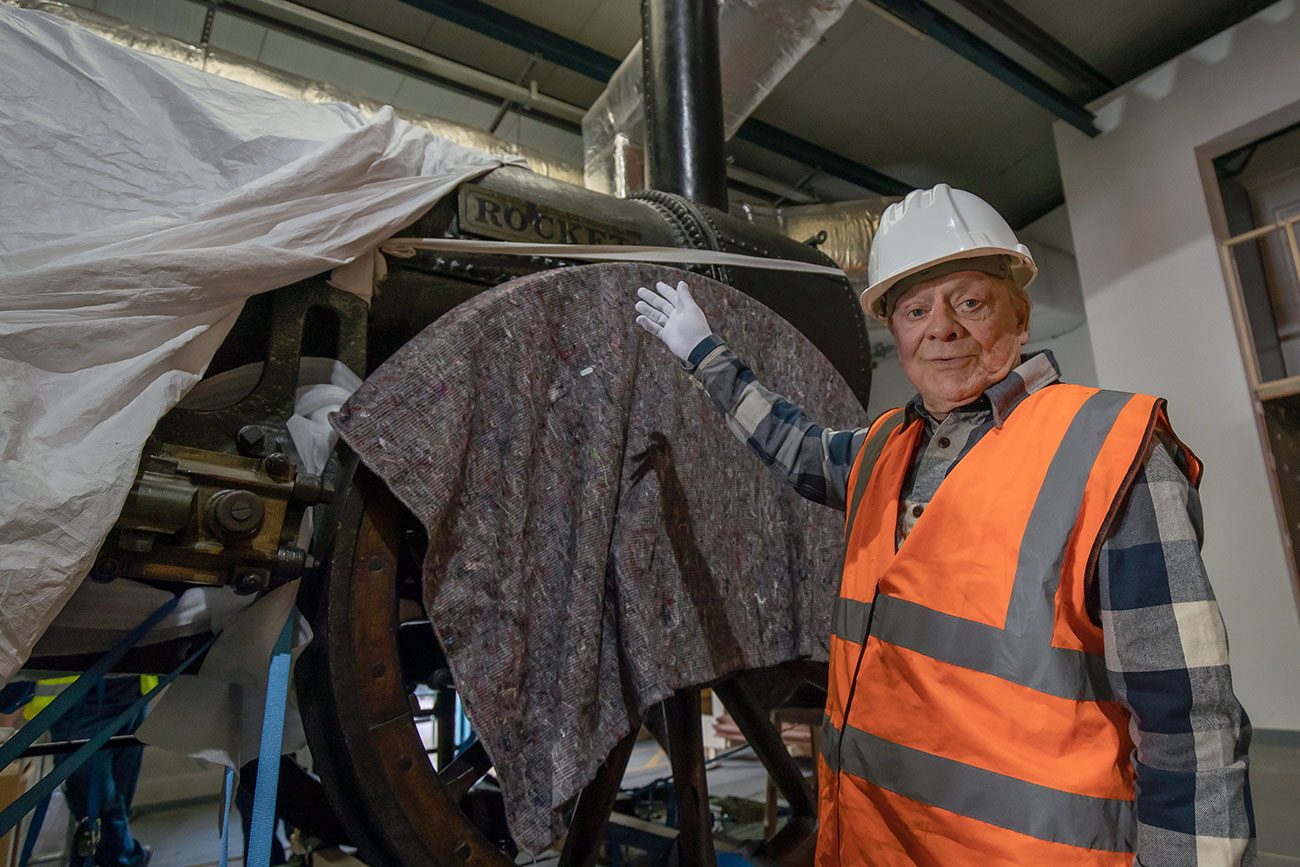One of our greatest screen icons was on hand to greet one of the world’s greatest engineering icons when it arrived in York.
Sir David Jason welcomed Stephenson’s original Rocket locomotive as it was installed at the National Railway Museum on Wednesday.
Transport enthusiast Sir David seemed mightily impressed with the forebear of the railways, after it arrived in York on a low loader and was craned into the museum.

Built in 1829, Rocket is one of the UK’s most historically significant objects. After success at the Rainhill Trials that year, the engine operated on the world’s first inter-city passenger railway in 1830 and helped usher in the railway age, shaping the modern world as we know it.
Rocket was the only locomotive to successfully complete the trials, achieving a then remarkable top speed of 30 mph and proving that steam power was better than horsepower.
Exciting times

Senior curator at the National Railway Museum Anthony Coulls said:
-
Rocket was not the first steam engine, but it is certainly one of the most significant and it combined all the technological innovations available at the time to create one engine that was faster and more reliable than anything seen before.
I am very excited at the prospect of displaying Stephenson’s original Rocket at the National Railway Museum alongside the models of Brass, Steel and Fire which will bring the story of the railways and engineering alive for our visitors.

Alongside Rocket, highlights of the Brass, Steel and Fire exhibition include the world’s oldest working model steam engine made in 1836 by Thomas Greener, aged just 16 years old.
The exhibition also features a very early example of a working toy engine named Pilot. This type of engine was nicknamed a ‘dribbler’ because they often left a trail of hot water or flammable spirits in their wake.


